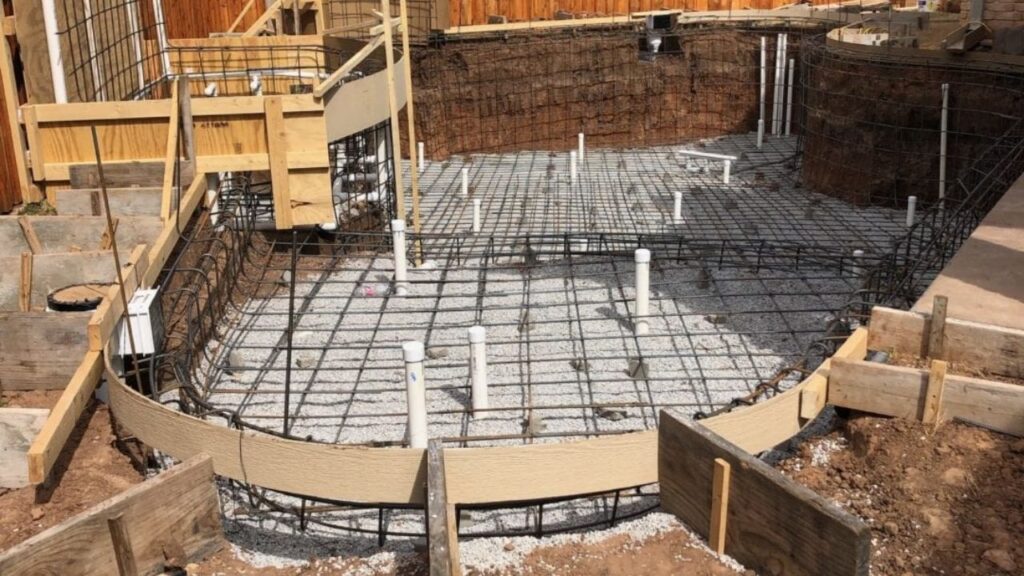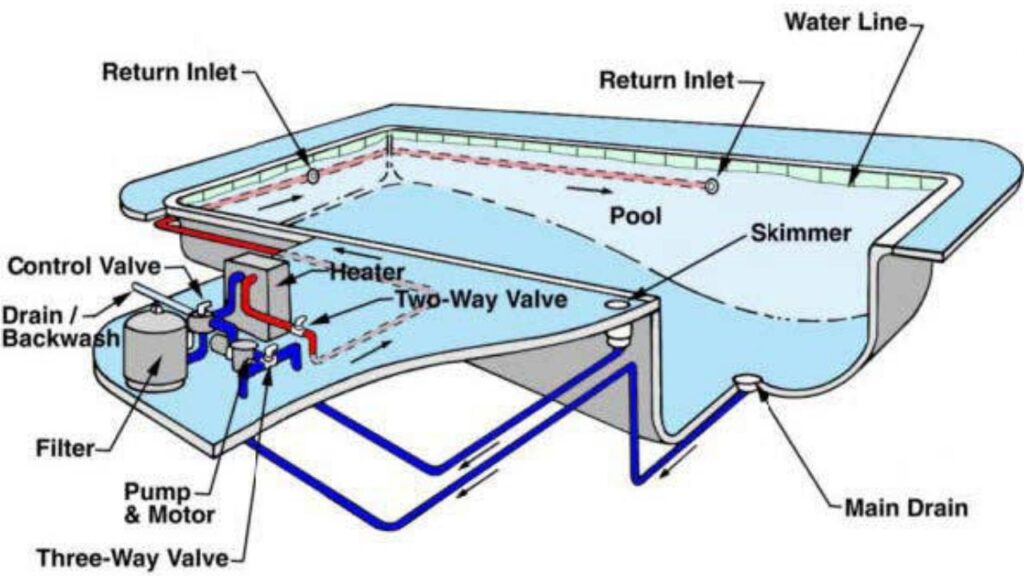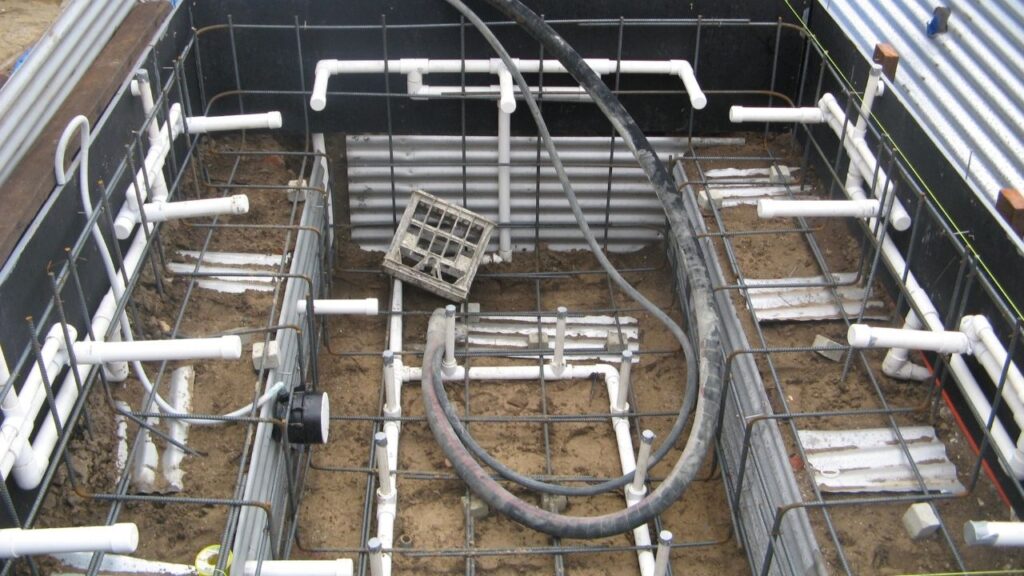Swimming Pool Plumbing Systems
A typical swimming pool has a number of major components including a basin, a motorized pump, a water filter, drains, return lines, and plumbing piping connecting these components. Chlorine is often the sanitizing agent used in swimming pools, and given the corrosive nature of chlorine, PVC plastic is usually the material of choice for swimming pool plumbing and piping. The water in a pool must be sanitized and have debris strained out of it.

Although in-ground pools appear to be solid and unmovable, they are actually more like a boat. With an increase of ground water, the pool could actually float up out of the ground. For this reason, most in-ground pools come equipped with a hydrostatic pressure relief valve which equalizes the pressure inside the pool with the surrounding soil and ground water, preventing a floating action which could cause substantial damage to the basin.
Every in-ground pool normally has a drain at the lowest part of the basin. This drain is used out to drain the pool and to draw pool water through the filter. In a bathtub, when the stopper is pulled, a vortex occurs at the point at which the water drains. In order to prevent such a vortex from occurring in a swimming pool drain, a device called an anti-vortex cover is installed. The cover allows dirt and debris to flow out of the pool but prevents people from getting their hair and/or limbs sucked in and stuck in the drain. Pools also have a skimmer, which serves to circulate pool water through the filter and also skims the surface of the water. It draws water only from the surface, and can remove a large amount of the floating debris.

Part of the skimmer is a device called a weir. A weir is a low head dam. In the case of a swimming pool skimmer, the weir serves to limit the amount of water that can flow over the dam. This action causes the basket to fill up with debris as the water passes through it and on to the main filter. As with the rest of the filtering devices, the pool skimmer basket must be emptied periodically.
In a pool system, the piping from the pool to the pump is undergoing suction, and from the pump through the filter and heaters (if present) it is being pumped and is under positive pressure returning to the pool.
Vacuum ports may be supplied with a pool which are used exclusively for cleaning. The “hose” connects the vacuum port to the pool vacuum cleaners. A pool vacuum cleaner is similar to a carpet vacuum cleaner, except it is designed to suck water instead of air. The pool vacuum system may be pumped by the main pool pumps or it may have its own dedicated pumping system.
Every pool with filtering capability must have a pump. The pump sucks the pool water from the various drains through the piping to the pump, and then pumps it through the filter, chemical treatment, and heater and back to the pool. Before the water flows through the pump, a strainer catches the solids. Failure to have a strainer will cause the pump to fail, because the pump is not designed to handle solids. The strainer is normally plastic or stainless steel to prohibit rust.
Filters and chemical treatment are essential for pools. Without these, our pools would be too contaminated to swim in for any length of time. There are two most widely used type of filters. One type is the sand filter, which consists of a large tank, usually made of fiberglass, metal, or concrete. There will be a thick bed of special sand in the filter. When water is being pumped through the system, dirty water from the pool enters the filter. Gravity pulls the water down through the sand and the sand catches any dirt or debris left in the water that was not filtered by the strainer. Once the water is pulled down through the filtering sand, it continues on to the heater or back to the pool. Other types of filters utilize materials other than sand.

As with any filter, over time a pool filter becomes clogged and the flow of water slows down. Clogged filters also allow some contaminants to re-enter the pool. Much like the filter in your furnace, which as it becomes clogged does not allow the passage of air with the same energy, reduced pressure of water moving through a pool system indicates that the filter should be cleaned. Pressure gauges at the filter inlet and outlet indicate how much the filter is clogged so that cleaning can be implemented at an optimal time. Cleaning may occur by back-washing the filter. Back-washing is accomplished by redirecting the filtered pool water back through the filtering media. By closing certain valves and opening others, the backwash goes to waste instead of back into the pool. Other filters have cartridges to be replaced at specific intervals. For good water clarity, it is important to clean the filters per the manufacturer’s recommendations.
Process To Get Swimming Pool Systems Cost Estimate Report
Here I am going to share some steps to get your Swimming Pool Systems cost estimate report.
-
You need to send your plan to us.
You can send us your plan on info@estimatorflorida.com
-
You receive a quote for your project.
Before starting your project, we send you a quote for your service. That quote will have detailed information about your project. Here you will get information about the size, difficulty, complexity and bid date when determining pricing.
-
Get Estimate Report
We do Swimming Pool Systems estimating and prepare a detailed report for your project. At last you finalize the report and finish the project.

